CompTIA Security+ Certification
Threats Vulnerabilities and Mitigations
Other Application Attacks
Forgery application attacks involve impersonating or manipulating legitimate entities to deceive users, enabling attackers to gain unauthorized access or control. These types of attacks exploit the trust that users or systems place in trusted sources.
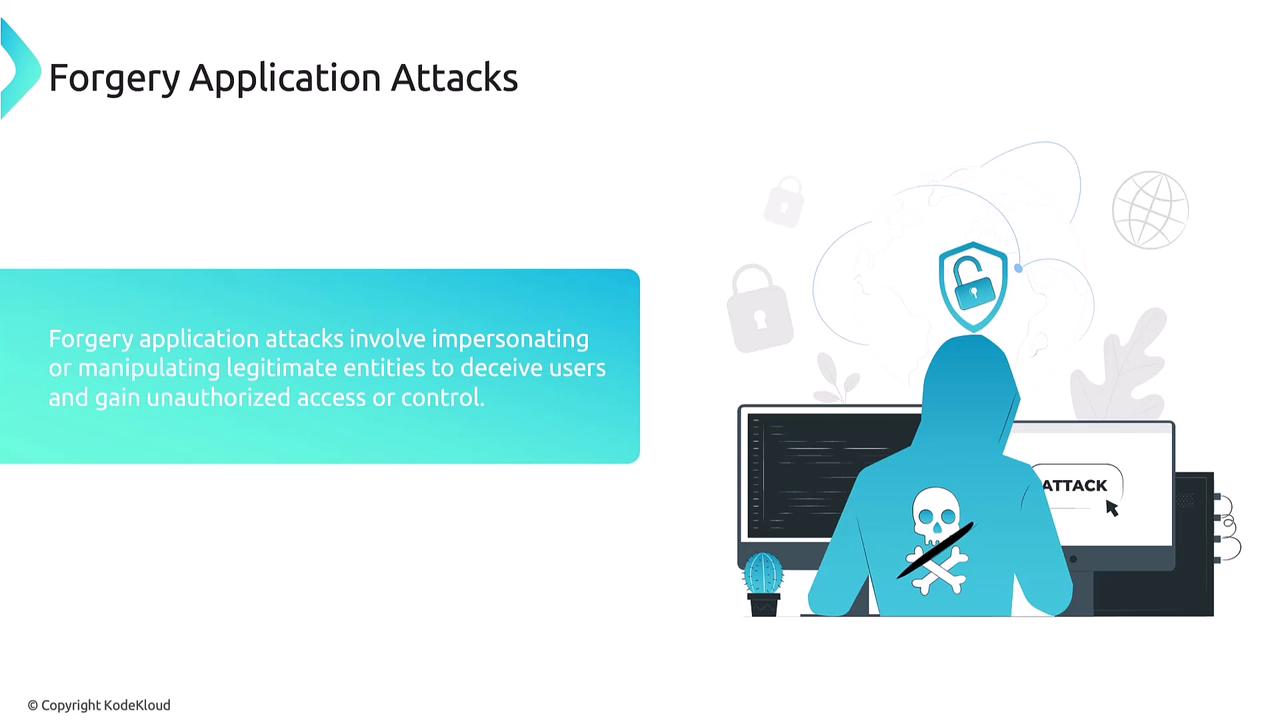
To carry out these attacks, malicious actors create fake requests, messages, or signatures that seem to come from a trusted source. This deception can lead to unauthorized actions, data breaches, and significant security risks.
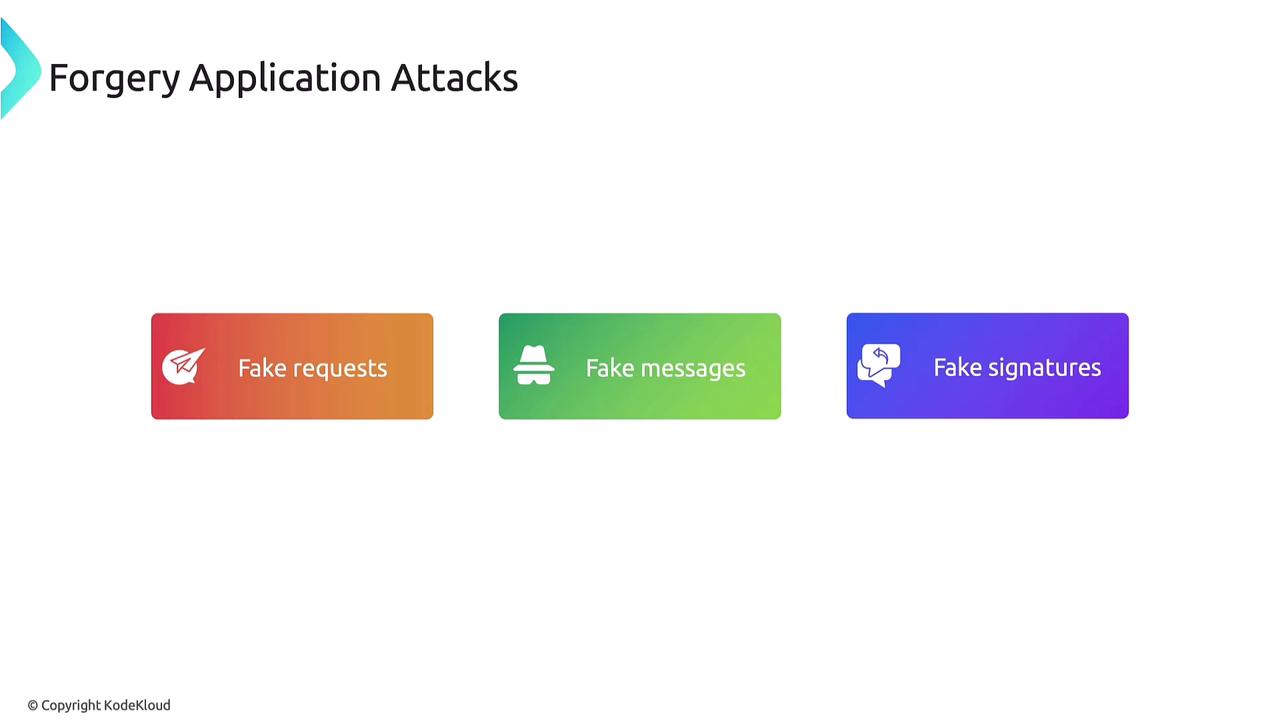
Understanding the various types of forgery attacks is crucial for effective cybersecurity. This article focuses on two prominent examples: Cross-Site Request Forgery (CSRF) and Email Spoofing.
Cross-Site Request Forgery (CSRF)
Cross-Site Request Forgery (CSRF) tricks a user into performing actions on a web application without their consent. Typically, the process involves the user authenticating on a website, after which the attacker leverages the active session to send unauthorized requests.
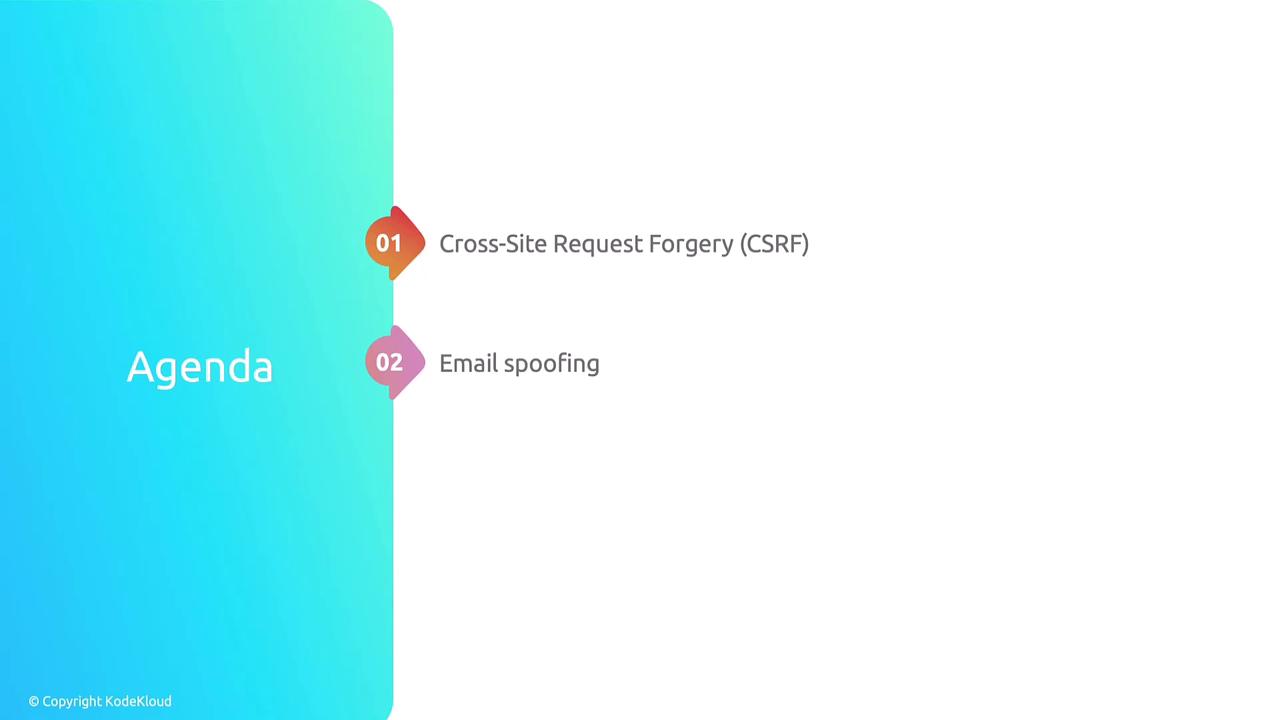
The CSRF process generally unfolds in the following steps:
- The user logs into a web application and receives an authentication token or session cookie.
- The attacker crafts a malicious request that mimics a legitimate one.
- The attacker tricks the user into visiting a malicious website or clicking on a deceptive link.
- The web application executes the forged request using the user’s active authentication token, resulting in unauthorized actions.
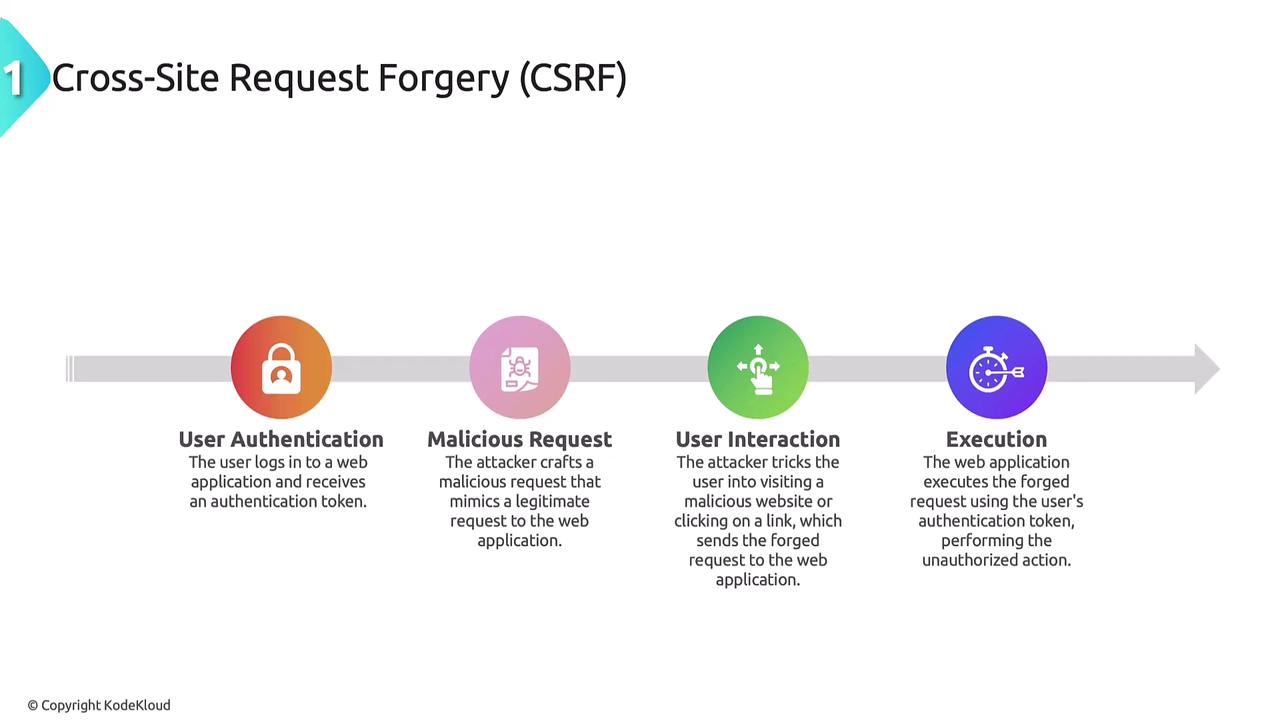
For example, consider a user logged into their banking application. An attacker might send an email containing a link to a malicious website. When the user clicks the link, a hidden form could automatically submit a request to transfer funds from the user’s account to the attacker's account—all without the user’s awareness.
Security Tip
Ensure that web applications implement anti-CSRF tokens and verify the origin of HTTP requests to mitigate CSRF attacks.
Email Spoofing
Email spoofing involves forging email messages by using a fabricated sender address to deceive recipients. In this attack, the attacker impersonates a trusted entity to manipulate the recipient into taking harmful actions, such as revealing sensitive information or installing malware.
The email spoofing process typically includes:
- Crafting an email that appears to be sent from a trusted source, such as a bank or colleague.
- Manipulating the email headers to include a forged sender address.
- Deceiving the recipient into believing the email is genuine, prompting them to follow instructions that may lead to data theft or malware infection.
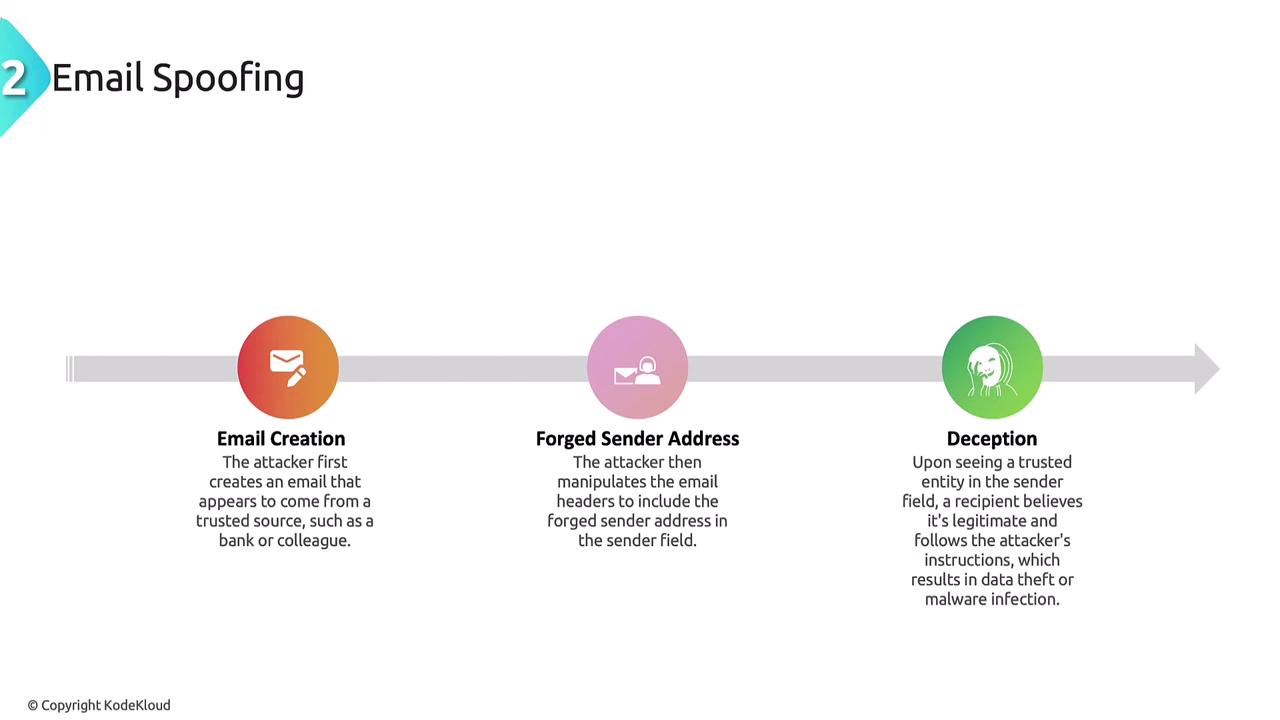
For instance, an attacker might send an email that seems to originate from the recipient’s bank requesting account verification. When the recipient clicks on the provided link, they are directed to a fraudulent website designed to harvest their login credentials.
Important
Always exercise caution when receiving unexpected emails, especially those requesting sensitive information or urging immediate action. Verify the sender's authenticity via trusted channels before complying.
Conclusion
Forgery application attacks, including CSRF and email spoofing, represent significant security risks. By comprehending these attack methods, organizations and individuals can implement stronger safeguards to protect sensitive data and prevent unauthorized actions.
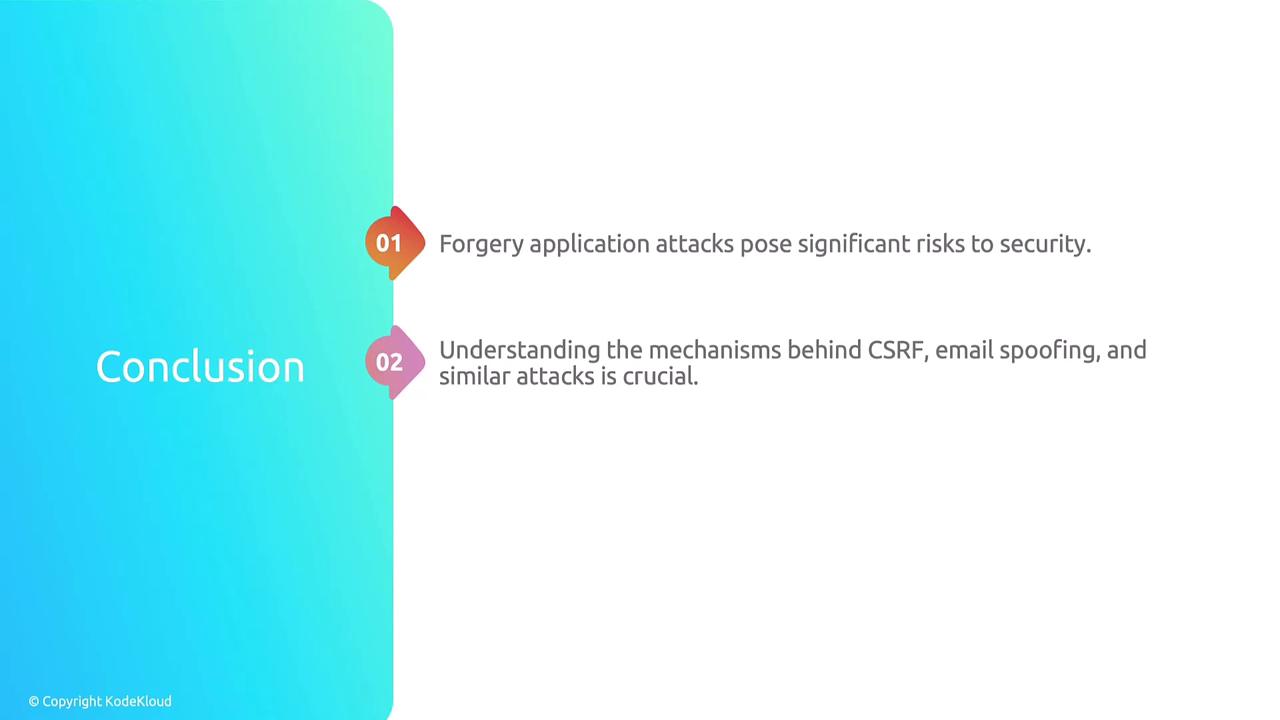
For more information on cybersecurity best practices and defensive measures, explore additional resources such as Kaspersky Security Center and Cybersecurity & Infrastructure Security Agency.
Thank you.
Watch Video
Watch video content